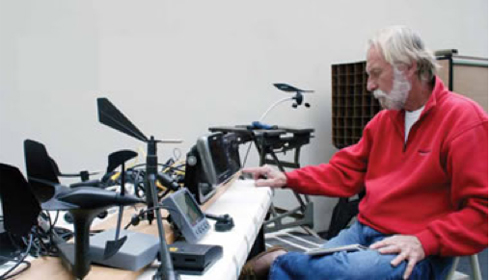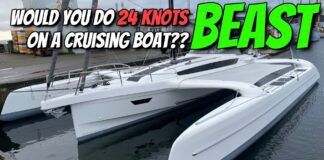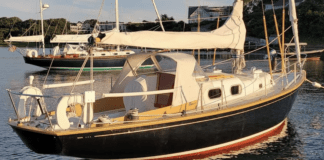
Part three of our wind sensor test, coming in the August issue, allowed us to test the plug-and-play interoperability of marine electronics that are nominally compliant with NMEA 2000 (N2K), the long-coming new standard for marine electronics (which isn’t very new at all).
Over the past 10 years or so, weve highlighted the many advantages and disadvantages of NMEA 2000 in past articles, most recently in the September 2013 issue. From a consumers perspective, one of the most obvious advantages of installing N2K electronics is the ability to mix and match components from different manufacturers. While this sounds terrific on paper, we’ve often run into installation hurdles when trying to get sensors and displays from different manufacturers to play nicely-even those that advertise being N2K-compliant.
Our foray into the world of wind instruments has yielded a much more positive NMEA 2000 experience. We have found eight wind sensors that directly output NMEA 2000. They are the B&G 508; the Garmin GWS 10 and new gWind; Airmar’s WX100, WX110, WX150, and WX 200; and Maretron’s WSO100. We havent looked at all of these yet, but we have tested the most popular mechanical-type vanes, and-when possible-paired them with various displays.
Heres a quick preview of our mix-and-match experiments, in this case mixing Garmin and B&G gear.
Historically, Garmin was one of the more reluctant companies to expand its NMEA 2000 offerings (although Raymarine has also dragged its heels), butlately,it has started to come around. Navico (parent company for B&G, Lowrance, and Simrad), always seemed to take a more proactive stance, probably because a large share of Simrads business is commercial. However, consumers often complained that the company required its own special cable connectors.
When we finally completed all the connections in our Franken-systems, we were shocked. We ran into no major obstacles when joining the Garmin GWS 10 wind sensor to B&Gs Triton display, nor were we stymied when we tried to connect the B&G 508 wind sensor to Garmins GMI 20 display. We were pleasantly surprised that both combinations worked well together. The Triton and GMI 20 each recognized the other companys wind sensor, and both could sensors could be configured using the competitors display interface. The only difference between the two systems was that the Tritons software didnt seem to care what NMEA 2000 wind sensor was included in the network. The Garmin GMI 20 knew the B&G sensor wasnt a Garmin device, but it allowed us to configure the B&G sensor (set damping, alarms, etc.) using a generic menu designed for any unrecognized sensors.
Despite our success so far, we still advise buyers to check with manufacturers and verify any compatibility issues before attempting to connect components from different makers in the same network. In some cases, the devices may work, but you may lose some of the unique features that are enabled when the networked components are the same brand.
While we can understand why makers of marine electronics are protective of their brand and what goes on inside their black boxes, their survival may depend on how readily they promote inter-operability. This is the age of customization, and as long as marine electronics manufacturers try to fit sailors into pre-determined boxes, they are going to lose followers. Were already seeing the emergence of open-source software and hardware platforms that allow tech-savvy individuals to create their own sensor and display systems-something we will be doing in our final installment in this series using an Arduino circuit board.
Before we move onto that project, however, weve still got a few more sensors to look at, including the Maretron WSO100 ultrasonic wind sensor. Maretron specializes in developing NMEA 2000-compliant components, so we will be interested in taking a closer look at this sensor and seeing how well it interfaces with some of the displays we have in the workshop. If you have experience with this sensor, sensors from Airmar, or any of the other ultrasonic sensors, wed love to hear your comments; chime in below or send email to [email protected].








































